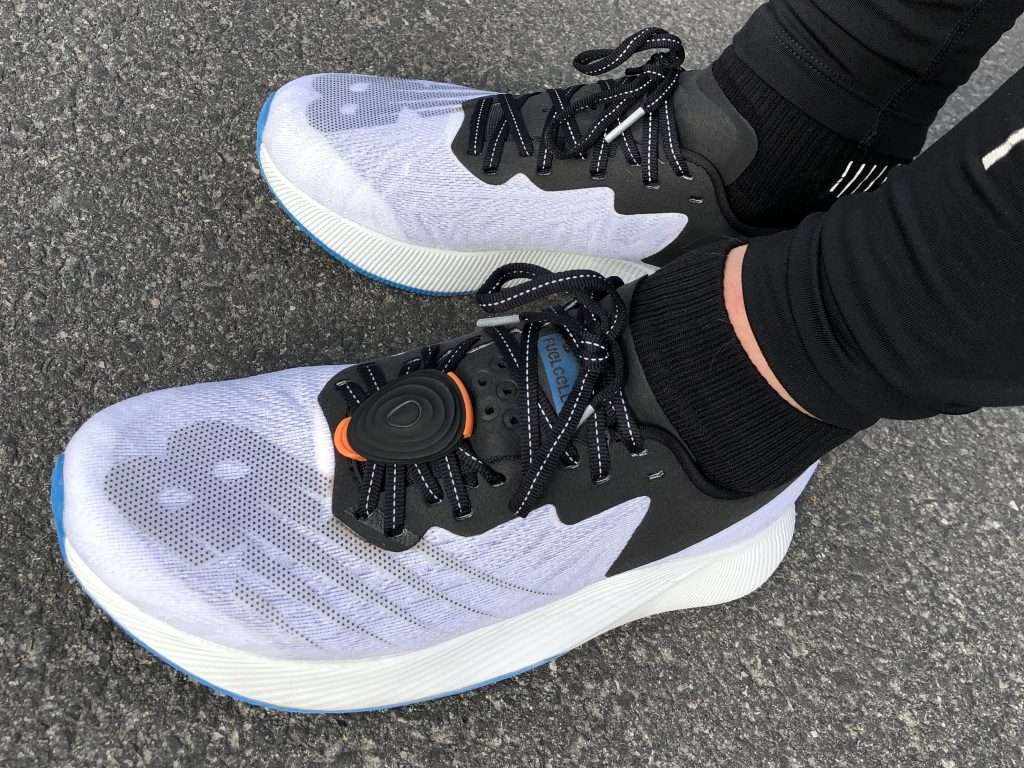Technological progress over the past decades has provided runners with a variety of methods to control their training intensity. GPS-watches gave way to monitoring pace outside of a track. Heart rate monitors let you track how hard your heart is working.
Common for all these tools is that they have one purpose: To help the runner train at the correct intensity. We explore this topic and why it is so critical in-depth in our article An Introduction to Running Training Intensity.
Adoption rates for the various tools differ across training groups and running cultures. While lactate meters are surprisingly commonplace in Norway, runners based in Kenya’s Rift Valley tend to modulate their effort by feel. Overall, though, pace and heart rate monitors are the most prevalent choices on a global scale.
Enter Running Power
In recent years, running power has gained a foothold as another option for tracking running intensity. Every significant sports watch maker has added support for the power metric across their devices. The move has coincided with the rise of dedicated hardware such as footpods from Stryd and RunScribe.
But what is running power, exactly? And can it somehow help you become a better runner?
The Power Concept
Runners who paid more attention in physics than me will remember that the definition of power, according to Wikipedia, is “the amount of energy transferred of converted per unit of time.“
The act of running, when discussing power, is defined as a mechanical system. In these systems, power is a function of forces and movement.
In biking, where power has been a highly utilised measure for decades, the mechanical system is quite simple. All the work you do by pedalling goes through the crank, so a power meter placed in the crank will do the job.
If you are going up a hill, you will have to pedal harder, and output more power, to keep your momentum going as you fight gravity. Likewise, the same applies if you are battling a headwind.

Running, however, is a more complicated mechanical system. Not every movement you make while running contributes to moving your body from A to B. As your foot lands, for instance, you actually expend energy on braking — which is referred to as negative work.
Similarly, the power that goes into vertical movement is, technically speaking, wasted energy. Furthermore, your tendons act as storages for elastic energy. As you stretch your tendons through your gait cycle, they release this energy by snapping back and pushing you off.
All of this is to say that measuring power while running is a complicated matter. But, if a gadget could estimate it correctly, would it be of use?
Mechanical Power versus Metabolic Power
The purpose of any measure monitored while running is to indicate how hard the runner is working. And when it comes to human locomotion, mechanical power alone does not give us the full picture.
Over time, humans have evolved to become superior long-distance runners in the biological race between species. But, this ability comes with a cost.
While running, a typical human being is only able to channel about 25% of the total energy expenditure to actual, mechanical energy. The remaining three-quarters dissipate as heat — an expensive by-product of movement. But one that is nevertheless important for our ability to endure over longer distances.
The total energy cost of movement is referred to as metabolic energy consumption. And when it comes to exercise, this is the only measure that matters — because the metabolic cost is what determines how hard you are working, and, by extension, how long you will be able to keep it up before you tire.
Determining metabolic power, however, is not practical. The way to do so is by monitoring the oxygen and carbon dioxide contents of the air you inhale and exhale. Running on a treadmill in a lab with a mask over your face works now and then. But it is not a particularly feasible way to observe the intensity of your daily running.
Is Running Power Useful?
The usefulness of running power, then, is determined by the extent to which it correlates with your with real metabolic power output. As explained by Alex Hutchinson in his excellent Sweat Science column, this relationship between mechanical and metabolic power is well defined. As he writes:
“… your efficiency stays roughly constant under all conditions, because pedaling a bike requires essentially the same motion on hills and flats, gravel and asphalt, in headwinds, and so on. Whatever your metabolic power is when the cycling meter says 250 watts, that relationship will hold true under all these conditions.”
Alex Hutchinson, Sweat Science
And this, as they say, is the rub when it comes to running power. Notable scientists within the field of biomechanics postulate that there is no fixed relationship between mechanical power output while running and actual metabolic cost. Neuromechanics professor Max Donelan at Simon Fraser University in Canada wrote in this oft-cited tweet:
![Quote by Max Donelan: “ "... even perfect measures [of mechanical running power] are not closely related to effort in running"”](/wp-content/uploads/2020/10/339CBF31-6802-4654-8AB6-0DBD9FFD3919-1024x493.jpeg)
When an authority within a relevant field speaks with such conviction, that must surely be it? Running power is indeed meaningless, and we can all go back to heart rate monitors and perceived effort?
Scientific Studies Point to Running Power Usefulness
The past couple of years, several scientific studies have looked at the relationship between running power, as measured by commercially available tech, and metabolic cost. Running coach Steve Palladino reviews six such studies in this article. Palladino, a 2:16 marathoner and Olympic trials qualifier himself, mainly investigates the findings related to the Stryd power meter.
The examined studies — published between 2016 and 2020 — all found Stryd to have impressive accuracy in terms of predicting metabolic cost. The most recent paper, as of writing, discovered that Stryd has a high degree of consistency in relation to oxygen consumption and repeatability. As a result, the authors concluded:
“… based on the higher repeatability and relationship with the VO2 of the Stryd technology, we encourage practitioners to use this device for PW measurement in running activities.”
Cerezuela-Espejo et al, European Journal of Sport Science, March 2020
What gives? How does a host of scientific studies end up finding a relationship that experts claim should not exist? The explanation lies in Stryd’s proprietary algorithm for estimating running power. And the fact that it is not really estimating mechanical power output at all.
A Different Measure Entirely
The makers of Stryd are aware of the fact that measuring mechanical power while running is not particularly useful. Instead, they finely tuned the way their power meter interprets the multitude of inputs from its sensors to come up with a measure that more accurately correlates to metabolical energy consumption.
In a white paper, they explain that what their footpod only measures positive mechanical energy. Or, put another way, the power a runner generates in the push-off against the ground.
Every study I have seen to date has validated the relationship between this measure of running power and metabolic energy cost. And Stryd points out this fact in their whitepaper. Unfortunately, there are some complicating factors, and this relationship does not hold in all circumstances.
Hills
Take hills, for instance. When you are running up a steep hill, there is less bounce in your step, and the elastic energy contribution decreases with the increase in slope. Conversely, as you run downhill, gravity’s pull accounts for your pace, while you increasingly expend your energy on breaking.
How did the folks at Stryd approach this problem? Speaking to Alex Hutchinson, the founders of the company revealed that they used reverse engineering to produce more meaningful numbers while running hills. In practice, this means anchoring a particular metabolic consumption rate to a set power number while running on the flat ground. As you’re running uphill, Stryd measured the metabolic energy expenditure and used that number to adjust the displayed power output.
And, as the research seems to indicate, this approach seems to hold up to scientific scrutiny. The result is that Stryd has found a method for estimating “power” while running that correlates well to metabolic energy demand.

Winds
Another factor that further complicates the picture is air resistance. In biking a power meter observes the power going through the crank, air resistance is inherently a part of the equation. Running power, however, is estimated based on a variety of inputs such as velocity and slope. As such, it does not inherently account for the variance in energy consumption due to varying air resistance.
Instead, air resistance must be estimated or observed and considered in the equation. Garmin led the way in this regard, by using weather forecast data as part of their power equation. In my experience, the results were not particularly meaningful.
In 2019, Stryd released an updated version of their footpod that attempts to measure airflow through the pod. Measuring this, and pairing it with user data such as height and weight, allows them to estimate the power necessary to overcome air resistance.
Sports tech guru DC Rainmaker did an early test of the airflow enabled Stryd pod, without getting any conclusive results on the accuracy. Stryd is, naturally, confident that their air resistance measurements are accurate and reliable.
I have yet to see any studies that focus primarily on how Stryd’s airpower measure impacts its correlation with the metabolic cost of running. But, based on Stryd’s verified track record to date, I find it likely that this introduction will increase the accuracy of their footpod.
Can Running Power Help You Train Smarter?
At this point, it is clear that what we today talk about as running power is not power in a strict sense. And that is a good thing because when it comes to running, the mechanical power output is not a useful measure.
Instead, we are looking at a measure that carefully tries to track metabolic energy expenditure associated with running — calling it “running power” is merely a marketing choice. But the usefulness of such a measure is beyond question.
It all comes down to whether it accurately and consistently predicts the total metabolic load of running. Based on the available research on the subject, the answer is that there are power meters out there today that do this. The Stryd footpod appears to be the most reliable option, with others struggling to catch up.
DC Rainmaker argues that an industry standard is necessary for power to be truly beneficial and gain meaningful adoption. While power comparisons between devices would be nice, the nature of “running power” means that it is nigh on impossible to standardise. The different players in this space essentially compete on who can predict metabolic cost with the highest degree of accuracy.
Context and Understanding is Essential
That does not mean that the measure can’t be useful or gain adoption. I would argue that the usefulness of running power comes down to how well the relevant players can contextualise the power number, and give it real meaning that can inform an athlete’s decisions around training. Similar to how the number of heartbeats per minute is meaningless without context, your current output in watts has no value without the prerequisite understanding.
However, with that knowledge and contextual awareness, I believe that what we call running power has real value. Stryd, in particular, has shown real progress in providing this necessary information through their platform over the past year.
In the coming weeks and months, I will be detailing my experience of training with a running power meter from Stryd. Do you want to learn more about how running power can inform your running? Sign up for our newsletter below to make sure you don’t miss out.
Like this?
Let me know by sending me an email at lc@run161.com.
